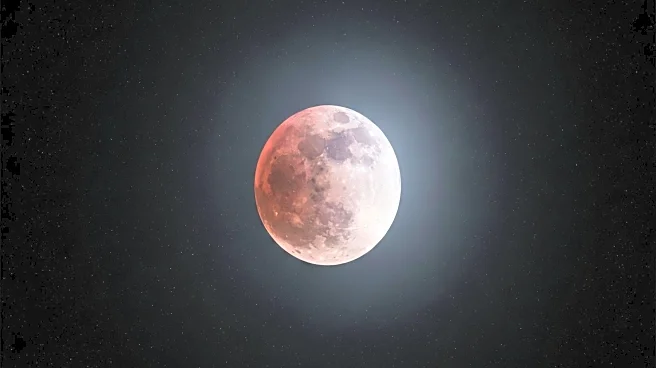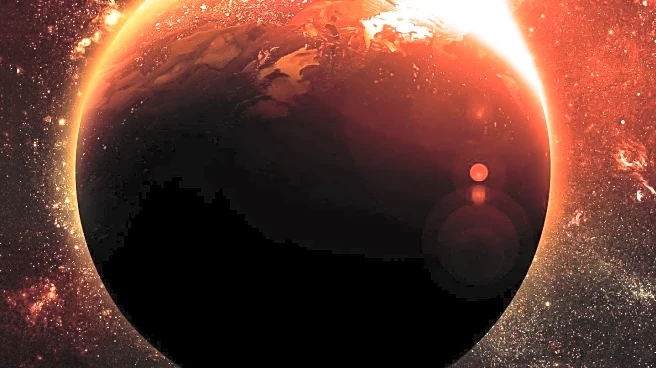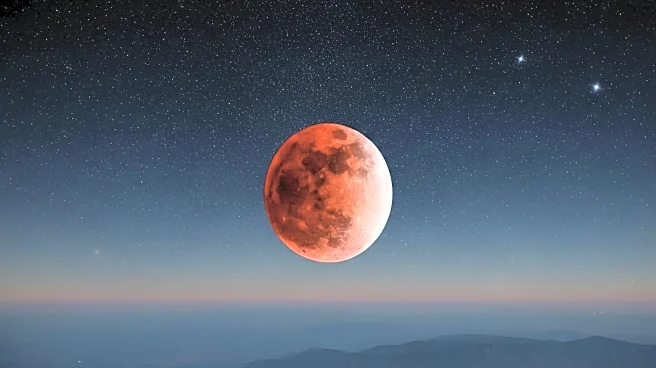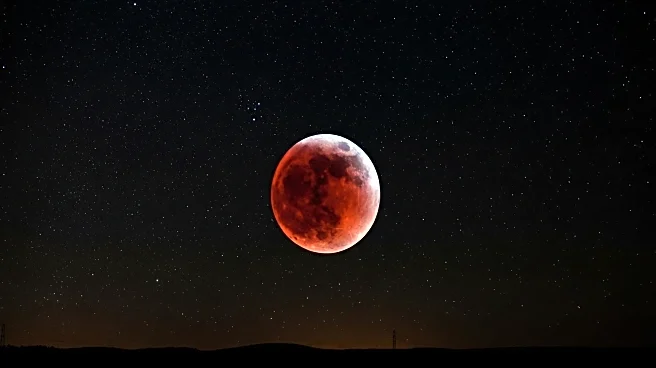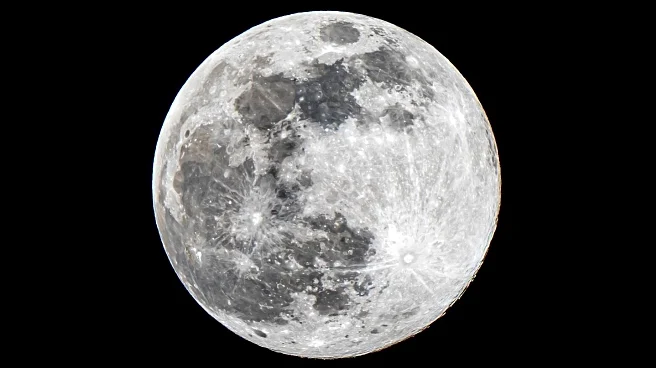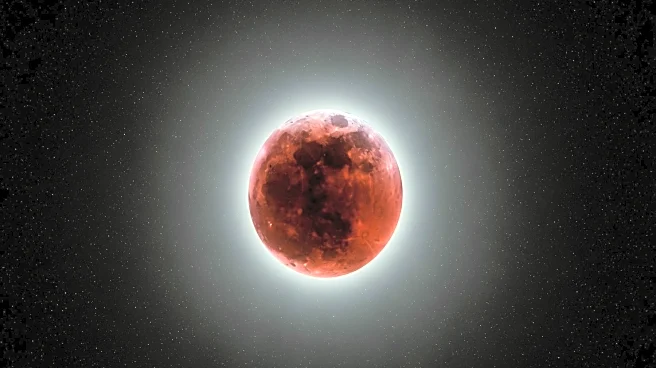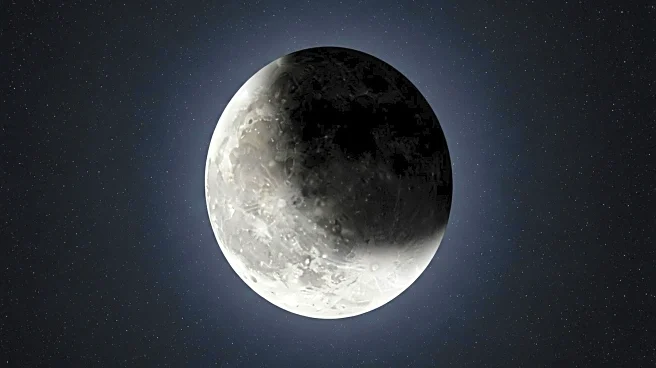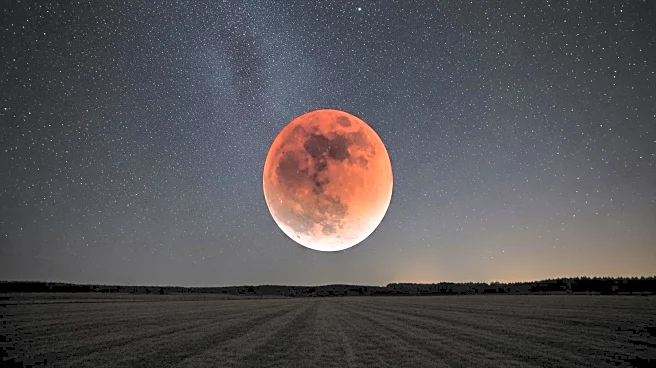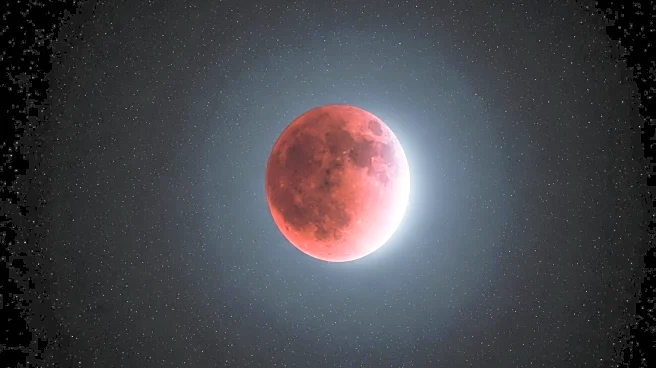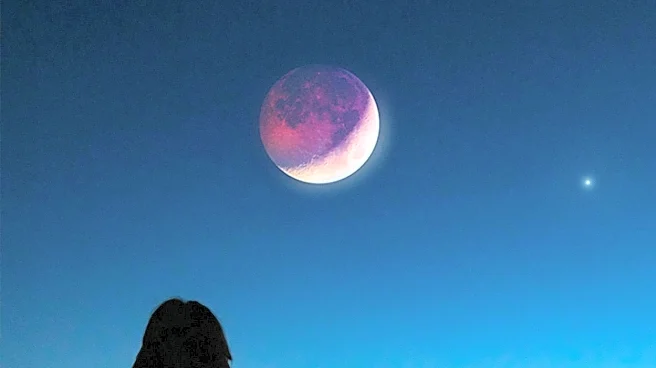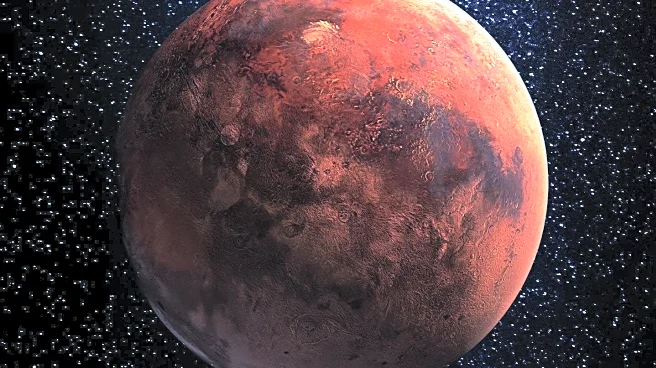What's Happening?
A total lunar eclipse is set to occur on Sunday night, offering a rare celestial event visible to much of the world. During a total lunar eclipse, the Earth passes between the Moon and the Sun, casting a shadow that completely covers the Moon. This alignment results in a 'blood moon' effect, where the Moon appears a dark, rusty red due to the scattering of shorter wavelengths of light. The totality phase of this eclipse will last 83 minutes, making it one of the longest in decades. However, the eclipse will not be visible in most of the Americas, except for parts of Hawaii.
Why It's Important?
Total lunar eclipses are relatively rare, occurring only a few times a year and visible from specific regions. This event provides an opportunity for skywatchers in Europe, Africa, Asia, and Australia to witness a unique astronomical phenomenon. The extended duration of the totality phase adds to the significance of this eclipse, offering a prolonged view of the 'blood moon.' Such events can inspire interest in astronomy and provide educational opportunities for understanding celestial mechanics.
What's Next?
The next total lunar eclipse visible in the U.S. is scheduled for March 3, 2026. It will be observable across the Americas, Pacific, and parts of Australia and Eastern Asia. This upcoming eclipse is expected to have a shorter totality phase, lasting about 58 minutes. Skywatchers are encouraged to prepare for future eclipses by ensuring clear skies and minimal light pollution for optimal viewing conditions.
